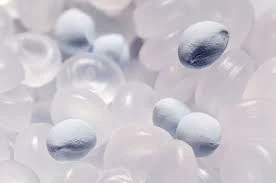The Structure and Significance of Ammonium Thiocyanate
Ammonium thiocyanate, with the chemical formula NH4SCN, is an inorganic compound that has drawn considerable attention due to its unique structural properties and diverse applications in various fields. This compound consists of the ammonium ion (NH4+) and the thiocyanate anion (SCN–). Understanding the structure of ammonium thiocyanate is essential for appreciating its behavior in chemical reactions, its role in biological systems, and its applications in industrial processes.
Molecular Structure
The structure of ammonium thiocyanate is characterized by the presence of the ammonium cation and the thiocyanate anion. The ammonium ion consists of four hydrogen atoms covalently bonded to a nitrogen atom. This ion carries a positive charge, making it a stable and effective counterion in various salt forms. The nitrogen atom in the ammonium ion is sp³ hybridized, resulting in a tetrahedral arrangement of the hydrogen atoms around it.
On the other hand, the thiocyanate ion comprises a sulfur atom bonded to a carbon atom, which is in turn bonded to a nitrogen atom. The arrangement of atoms in the thiocyanate ion can vary; it can adopt resonance structures that contribute to the overall stability of the ion. The most common resonance forms show the triple bond between the carbon and nitrogen, highlighting the significant role of the pi-electrons in its bonding characteristics. The molecular geometry of the thiocyanate ion is linear, owing to the sp hybridization of the carbon atom.
When these two ions combine, they form a crystalline solid at room temperature. The interactions between the cations and anions are ionic in nature, leading to a stable solid-phase environment. The packed structure of ammonium thiocyanate can be studied using techniques such as X-ray crystallography, which reveals the distance and angles between the constituent atoms.
Properties and Behavior
ammonium thiocyanate structure

Ammonium thiocyanate exhibits fascinating thermal properties, including its ability to undergo endothermic dissolution in water. This property contributes to its use in cooling applications, as the dissolution process absorbs heat from the environment, resulting in a temperature drop. The endothermic nature of ammonium thiocyanate is an example of Le Chatelier's Principle in action and finds practical applications in instant cold packs used in sports injuries.
In addition to its cooling effects, ammonium thiocyanate plays a crucial role in the field of chemistry as a reagent. It serves as a source of thiocyanate ions, which can participate in various chemical reactions, including complexation reactions with metal ions. These thiocyanate complexes can exhibit vivid colors, making them valuable for analytical chemistry and detection methods.
Applications in Various Fields
The unique properties of ammonium thiocyanate have led to its use in several applications across different industries. In agriculture, it is employed as a fertilizer due to its nitrogen content, having beneficial effects on plant growth. In the laboratory, it is often used in the preparation of thiocyanate salts and in studies involving metal coordination complexes.
Moreover, ammonium thiocyanate has gained attention in the realm of pharmaceuticals. Its potential antimicrobial properties are being explored, with research indicating possible uses in antibiotic formulations. The compound’s ability to selectively bind to certain metal ions also makes it a candidate for various analytical techniques, including spectrophotometry.
Conclusion
Ammonium thiocyanate is more than just a simple chemical compound; its structural features, thermal properties, and diverse applications make it a fascinating subject of study. From its role as a reagent in chemical reactions to its practical uses in agriculture and medicine, understanding ammonium thiocyanate enhances our appreciation for the complexities of inorganic compounds. As research continues, the full potential of this compound and its applications will likely expand, further increasing its relevance across multiple disciplines.

